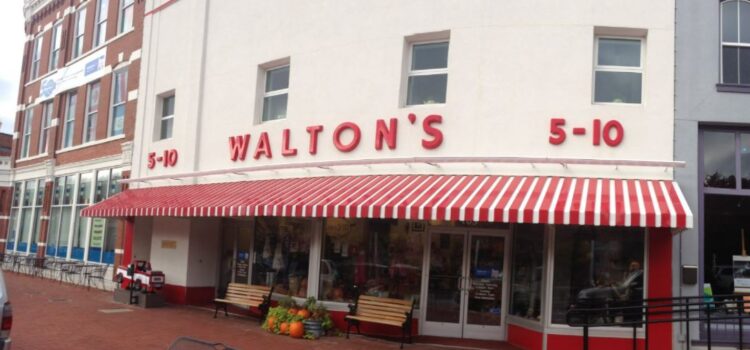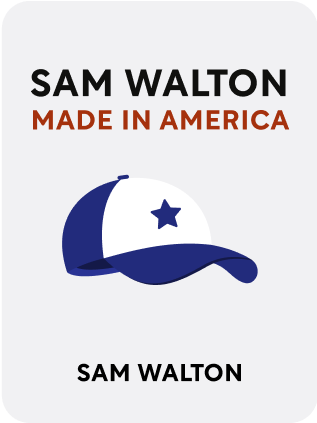

This article is an excerpt from the Shortform book guide to "Sam Walton: Made in America" by Sam Walton. Shortform has the world's best summaries and analyses of books you should be reading.
Like this article? Sign up for a free trial here .
What was Sam Walton’s story? How did a small-town guy end up founding one of America’s largest retail stores?
Although he had a rough childhood, Sam Walton’s life motto was to never lose. After leaving the army, Walton decided to buy a Benjamin Franklin variety store which would eventually turn into Walton’s Five and Dime.
Continue reading to learn more about Sam Walton’s story.
Sam Walton’s Early Life
Sam Walton’s story began when he was born in Oklahoma in 1918 and moved to Missouri with his parents. He credited his dad for being a hard worker with high integrity and a great negotiator, and his mother for ambition and drive.
Sam notes that his parents argued a lot, and they split up after he grew up. He felt like he “took a lot of the brunt of this domestic discord,” and this possibly motivated him to stay busy all the time.
Walton was competitive throughout his early life: “It never occurred to me that I might lose…almost as if I had a right to win.” He led his high school football and basketball teams to championships, and he became president of his college senior class.
After supporting himself through college, he was tired and wanted a real job. He joined JC Penney in Des Moines, Iowa for 18 months.
In 1942, he was rejected for overseas combat duty for World War II and instead served limited duty domestically in the United States. Dejected, he quit JC Penney and worked at the Du Pont gunpowder plant. He met future wife Helen Robson in a bowling alley at this time, then entered military service.
Sam Walton’s First Store
In 1945, after 2 years of Army duty, Sam Walton wanted to go into business for himself. Helen gave him two rules: 1) no big city (population under 10,000) and 2) no partnerships (her family had seen business partnerships go sour, and she wanted him to work for himself).
This prompted Sam to buy a Ben Franklin variety store in Newport, Arkansas. He funded this with $20,000 as a loan from his father-in-law, plus $5,000 from personal savings.
The variety store (also known as a “five and dime” store) was a type of retail store that offered a wide range of inexpensive household goods.
Walton’s first store was the crucible where he learned the fundamentals of retail. Here he created a distinct retail strategy that set his store apart from competitors:
- Lower pricing—Walton wanted to sell products at lower prices and lower profits, believing that sales volume and customer loyalty would compensate.
- Promotion—Walton knew that a spectacle would draw customers from other stores. He served ice cream and had popcorn stands outside the shop.
- Suppliers—he found offbeat sources for low-cost goods, which allowed him to undercut his competitors on pricing.
These principles would continue to underlie Wal-Mart for decades to come.
In his first year of ownership, sales increased 45%. After 5 years, his Ben Franklin store became the highest selling in 6 states.
Unfortunately, the lease for Walton’s store expired, and his contract had no option to automatically renew the lease. The landlord, knowing he was in a bind, bought out his store. Sam Walton had to start from scratch again.
With his $50,000 from his store sale (worth roughly $500,000 in today’s dollars), Sam Walton moved his family to Bentonville, Arkansas, where he bought another struggling shop and turned it into another Ben Franklin franchise. He named the store “Walton’s Five and Dime.” This time they tried to get a 99-year lease.

———End of Preview———
Like what you just read? Read the rest of the world's best book summary and analysis of Sam Walton's "Sam Walton: Made in America" at Shortform .
Here's what you'll find in our full Sam Walton: Made in America summary :
- The story of Sam Walton and how he started Wal-Mart
- How Wal-Mart grew from a single five and dime store to one of the world's largest companies
- Sam Walton's retail strategies and management advice






